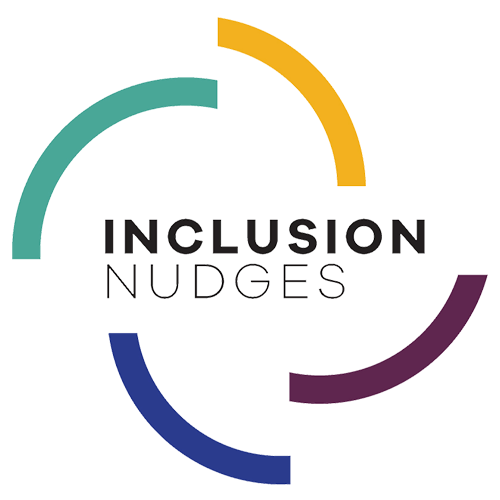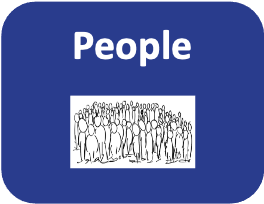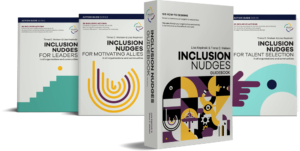What a tumultuous time the past two years have been! The pandemic-era (which we are still in) has been a massive, rapid-paced experimentation with new ways of working. It has brought about a profound shift in how we think about work and the future. There are still many open questions and evolving data. We have written an article series covering some of the emerging trends that we’ve categorised as ‘Purpose’, ‘People’, ‘Process & Policy’, and ‘Polarisation & Activism’. Plus, we share reflection questions on what these shifts might mean for DEI in your context during this highly ambiguous, fast-changing time.
This is the article covering the PEOPLE trends. You can also read the other 3 articles (PROCESS & POLICY, POLARISATION & ACTIVISM and PURPOSE) on the Inclusion Nudges blog, as well as the full article.
People
As economies, organisations, and people are trying to recover from the pandemic, talent is key. Power has shifted to employees and they are in a much stronger position in voicing what will attract and keep them with their employers.
This pandemic era brought about what has been called “The Great Resignation”. A global survey released in March 2021 found that over 40% of employees are thinking about leaving their employers this year. While researchers point out that there has been a building resignation trend before the pandemic, and intent to resign is not actual resignations, it is still a talent concern that the pandemic has accelerated. Consider these jobs data. In the U.S. during August 2021, 4.3 million voluntarily quit their jobs, with 10.4 million open jobs during the same month. In the U.K., during same time, there was a record high number of more than 1 million open jobs. This raises long-term concerns, with 70% of U.S. employers expecting this talent gap to continue next year and 61% report that they are struggling with retention of their employees. Company leaders in Germany (the EU’s largest economy) are also increasingly worried about the lack of skilled employees (with an 11% jump in 3 months to 34.6% in July 2021).
So, who’s leaving?
Analysis shows resignation rates as more prevalent among people at mid-career levels (up 20% from pre-pandemic levels) in the tech and health care sectors (both areas that experienced extreme demand during the pandemic). Additionally, while high turnover rates in the service and hospitality sectors continued during the pandemic, what has shifted is greater public awareness and empathy of the poor working conditions. Also, across many sectors, there are reports of more explosive, on-the-spot “Rage Quitting” when workers can no longer put up with negative work environments.
The pandemic has sharpened attention on the need to value employees and ensure inclusive workplaces with fair labour practices and policies.
In the current times, uncertainty is a given. For some people this has negative consequences because it leads to stress, while for others it has positive implications that leads to rethinking their current situation and considering new opportunities. This situation can trigger changes. Indeed, quitting is now an active way of saying that “we can do better”. With employees realising there are other work options, no organisation can ignore how workplace culture and employee experience impacts talent attraction and retention, and ultimately the organisation’s success and societal economic growth. People-centred work cultures must be part of The Great Reset and other ‘build back better’ initiatives as we emerge from the pandemic.
We must have an inclusive recovery, as it’s not been all voluntary resignations
“The Great Divergence” refers to the inequalities in our current economic recovery. Not all pandemic-era employment changes have been ‘Great Resignations’ but instead were unwanted job losses—further contributing to the global employment crisis. In OECD countries, there are now 20 million fewer people in work since the start of the pandemic, and over 110 million fewer jobs worldwide. The ILO calculates that in 2021 globally the hours worked will be 4.3% below pre-pandemic levels—the equivalent of 125 million full-time jobs. And the OECD points out that fewer working hours was most significantly in low-paid jobs. While unemployment is globally slightly dropping as of May 2021, it is still higher than before the pandemic. We need an inclusive approach to talent and employment, one that embraces the full scope of the pandemic-era work shifts and resets talent and employment to be fairer to all people. This is our moment to make profound changes.

Reflective questions
- What are you and the employees in your organisation needing to keep them engaged now? Have they been asked since the pandemic began?
- What is the attrition data in your organisation for the past year? How does this compare to pre-pandemic data?
- Why have employees left your organisation over the past year? If you don’t know, can you reach out to them for an exit interview? Sometimes having a time break, such as 3 months, from departure allows for more clarity on the issues and safety in voicing these.
- How have resignations, reductions, and job losses impacted the diversity representation in your workforce? Be sure to look at your data with an intersectional approach.
Closing Notes:

Thank you to Barry Phillips for inviting Lisa to give an HR Master Class as part of Legal Island’s support for DEI change makers. In that September 2021 session, Lisa presented some of these pandemic-era research trends and led a discussion on what it could mean for DEI.
We hope this summary of research on emerging workplace trends from the pandemic-era has sparked new areas to reflect upon as you focus on DEI and inclusive leadership in your organisations. If you would like to engage us for advisory consulting, coaching, and speaking, please do reach out to us at contact@inclusion-nudges.org
These Inclusion Nudges can support reflection:
Retention with an Alternative Future Vision in The Inclusion Nudges Guidebook
Talent Readiness & Mobility in Colours & Shapes in The Inclusion Nudges Guidebook
Colour Code People to Ensure Meritocracy in The Inclusion Nudges Guidebook and Inclusion Nudges for Leaders
Social Shuffle to Include Others in The Inclusion Nudges Guidebook and Inclusion Nudges for Leaders
Ask Flip Questions to Change Your Perceptions in the Moment in The Inclusion Nudges Guidebook, Inclusion Nudges for Leaders, Inclusion Nudges for Motivating Allies, & Inclusion Nudges for Talent Selection
Want to read more? See these other blog articles:
SERIES: The Pandemic-Era Shifts in Work & DEI: Read the other 3 articles in this series (PROCESS & POLICY, POLARISATION & ACTIVISM and PURPOSE), as well as the FULL ARTICLE.
Ally by Actions – Not by Posting on Social Media
Ally Through Empathic Perspective Taking
Ask Lisa & Tinna: How Can We Ensure Intersectionality is Best Reflected in KPIs







